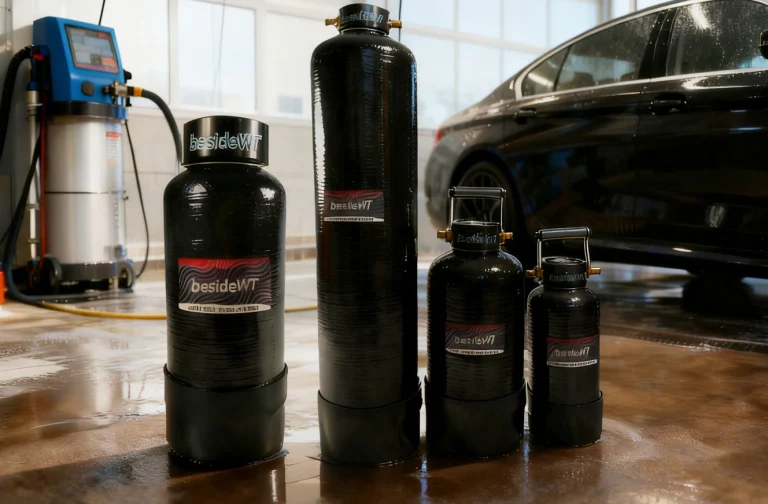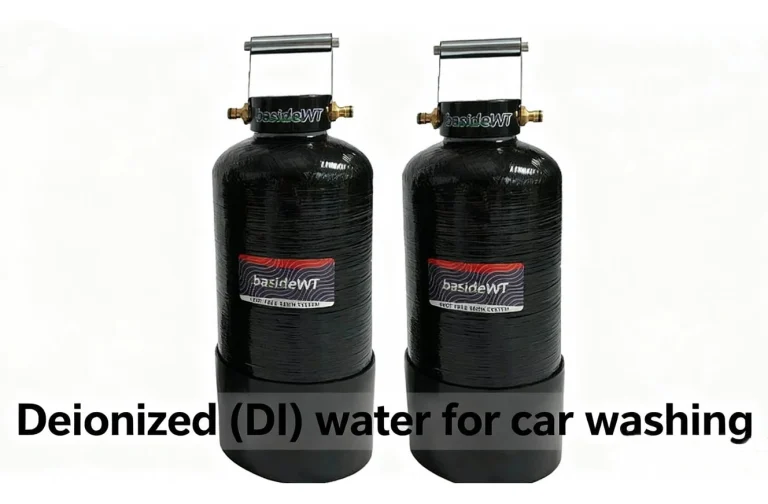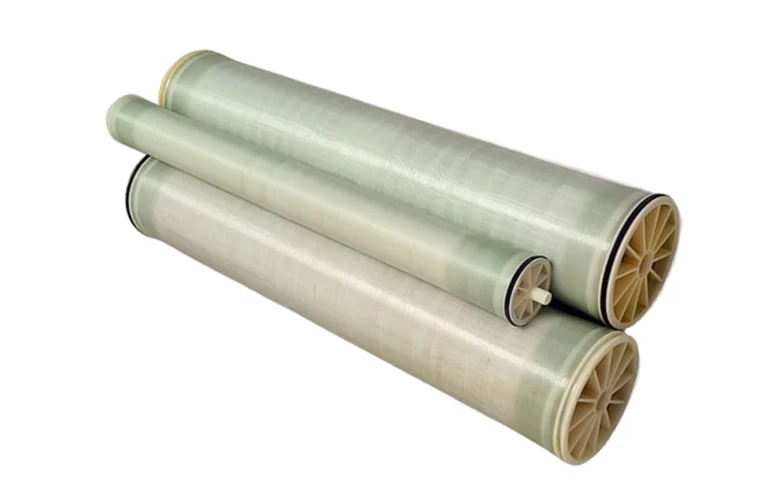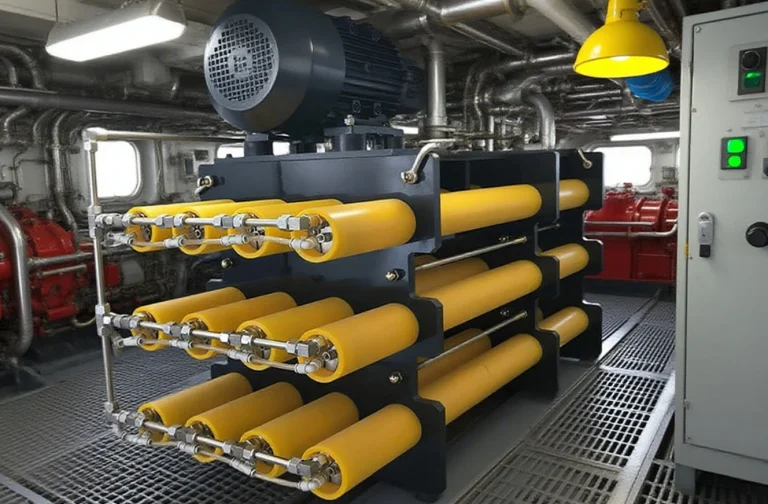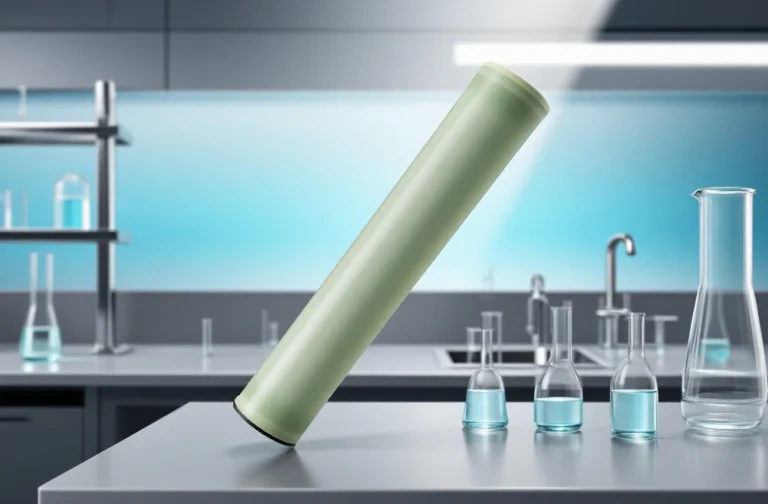BasideWT- Whole Home Water Filtration System & Replacement

How To Filter Iron From Well Water
Iron in well water is a widespread problem that affects the taste, color, and quality of your household water. From rusty stains in sinks to metallic-tasting drinks, excessive iron can make water unpleasant and even harmful to plumbing and appliances. If you’ve ever asked yourself “how to filter iron from well water”, this guide from BasideWT, a trusted expert in water purification technology, will help you understand every step of the process—from detection to treatment and long-term maintenance.
Understanding Iron Contamination in Well Water
Before learning how to filter iron from well water, it’s essential to know where the iron comes from and why it causes such persistent issues.
Why Iron Appears in Groundwater
Iron naturally exists in soil and rocks. As rainwater seeps through the ground, it dissolves iron minerals, carrying them into aquifers and wells. This process is entirely natural, but the result can be frustrating. When iron levels exceed 0.3 mg/L, the water starts to show visible discoloration and a metallic taste.
The Two Main Types of Iron
To effectively remove iron, it’s crucial to understand its form:
- Ferrous Iron (Clear Water Iron) – This form is invisible because the iron is dissolved in the water. When exposed to air, it oxidizes into ferric iron.
- Ferric Iron (Red Water Iron) – This type is already oxidized, making water appear reddish or brown.
Some wells also contain bacterial iron, formed when iron bacteria feed on iron molecules. This creates slimy residue that clogs pipes and filters.
Health and Household Impacts
Although small amounts of iron aren’t harmful to human health, high concentrations create significant problems:
- Staining: Rusty spots on clothes, bathtubs, and fixtures.
- Odor and Taste: Metallic flavor in drinks and unpleasant smell in water.
- Appliance Damage: Reduced efficiency in water heaters, washing machines, and plumbing.
Therefore, understanding how to filter iron from well water is more than about comfort—it’s about protecting your home’s infrastructure.
Detecting Iron in Your Well Water
Knowing what kind of iron is in your well is the first step toward an effective filtration plan.
Signs You Might Have Iron Problems
If you notice any of the following, iron is likely present:
- Reddish or orange stains in sinks.
- Metallic taste or smell.
- Slime buildup in toilets or pipes.
- Water discoloration after sitting in a glass for several minutes.
Testing for Iron
BasideWT recommends comprehensive water testing, including:
- Total Iron Concentration (mg/L)
- pH level
- Presence of manganese or sulfur
- Oxygen level (to determine oxidation capacity)
You can use home test kits, but for precise results, professional laboratory testing gives a full water profile. The test results determine the correct BasideWT filtration system—whether you need aeration, oxidation, or a multi-stage filtration approach.
How to Filter Iron from Well Water — Step-by-Step Solutions
Now let’s explore the methods available for how to filter iron from well water effectively. The choice depends on the iron type and concentration.
Oxidation Filtration (Air Injection Systems)
This is one of the most efficient solutions for high iron levels. BasideWT Air Injection Iron Filter Systems use air to oxidize ferrous iron into ferric particles, which can then be easily trapped by filter media.
How it works:
- Air is injected into the water line, forming an oxidation chamber.
- The iron oxidizes into solid particles.
- Filter media, such as manganese greensand or catalytic carbon, capture the particles.
- The system automatically backwashes to flush out trapped iron.
Advantages:
- No chemicals required.
- Effective up to 15 ppm iron.
- Low maintenance.
Example: A homeowner in Florida used the BasideWT AI-12 system and noticed stain-free fixtures and clear water within days.
Chemical Oxidation (Chlorine or Hydrogen Peroxide)
When iron bacteria or very high iron levels are present, chemical oxidation offers a robust solution.
Process Overview:
- A chemical (like chlorine or hydrogen peroxide) is injected to oxidize iron.
- The oxidized iron settles and is removed by filtration or sedimentation.
- Activated carbon or catalytic filters remove residual chemicals.
However, it’s worth noting that while chlorine treatment is effective, it requires consistent monitoring and may alter water taste. BasideWT Hybrid Filtration Systems minimize chemical use through intelligent dosing control.
Ion Exchange (Water Softening)
If your water contains both iron and hardness minerals (calcium, magnesium), a BasideWT Water Softener can help. The resin beads exchange iron and calcium ions with sodium or potassium ions, softening and clarifying the water simultaneously.
Limitations: This method works best for low iron levels (<3 ppm). If concentrations are higher, pre-treatment using oxidation or filtration is necessary.
Reverse Osmosis (RO) Systems
For drinking water, BasideWT Reverse Osmosis Systems provide an extra layer of purity. While whole-house filters remove most iron, RO systems polish water for consumption.
Features:
- Removes dissolved iron, manganese, and other trace metals.
- Produces crisp, clean-tasting water.
- Ideal for kitchen sinks or ice makers.
However, RO membranes can clog if pre-filters are not maintained, so combining RO with iron pre-filtration is essential for long-term efficiency.
Sediment and Catalytic Filtration
When iron particles are already oxidized, a BasideWT Sediment Filter or Catalytic Carbon Filter works well. The multi-layer PP filters trap suspended particles, while catalytic media transform remaining ferrous iron into ferric for easy removal.
These filters are often the final stage of a complete well-water treatment system.
Comparing Iron Filtration Methods
Choosing the best method depends on your specific water chemistry. The table below summarizes the pros and cons:
| Method | Iron Level | Removes Iron Type | Maintenance | Notes |
|---|---|---|---|---|
| Air Injection | Up to 15 ppm | Ferrous & Ferric | Low | Eco-friendly |
| Chemical Oxidation | >15 ppm | All types | Medium | Handles bacteria |
| Ion Exchange | <3 ppm | Ferrous only | Low | Also softens water |
| Reverse Osmosis | <1 ppm | Dissolved iron | Moderate | Ideal for drinking |
| Sediment Filter | Visible particles | Ferric only | Low | Good pre-filter |
Maintenance and System Longevity
Installing an iron filtration system is only part of the process. Long-term performance depends on proper upkeep.
Regular Backwashing
Filters that capture iron must periodically rinse out the trapped particles. Automatic backwash systems from BasideWT handle this effortlessly, saving time and ensuring consistent flow.
Media Replacement
Oxidation and catalytic media gradually lose efficiency. Most media types last 5–7 years, depending on iron levels and water usage. Using genuine BasideWT replacement cartridges maintains optimal performance.
Bacterial Control
Iron bacteria can develop biofilms that clog filters. To prevent this:
- Use periodic shock chlorination.
- Clean filter housings with mild sanitizers.
- Keep systems sealed to avoid oxygen intrusion.
Cost Analysis — Is It Worth It?
You might wonder whether investing in an iron filtration system is truly necessary. Let’s break it down.
Short-Term Costs
A typical BasideWT Air Injection Iron Filter costs between $300 and $1,000, depending on capacity. Additional sediment filters or RO systems range from $100 to $400.
Long-Term Savings
While upfront costs exist, the savings are substantial:
- Less plumbing corrosion and repair.
- Extended lifespan for washing machines and dishwashers.
- Elimination of bottled water purchases.
In the long run, filtering iron from your well water is a cost-effective and eco-friendly investment.
Common Mistakes When Filtering Iron from Well Water
Even the best systems can fail if installed or used incorrectly.
Ignoring Water Testing
Many homeowners skip testing and buy filters based on assumptions. This often leads to poor performance and wasted money. Always test before you treat.
Wrong Filter Type
Using a softener for high ferric iron, for example, causes resin fouling and system damage. Selecting the right BasideWT solution ensures proper filtration.
Lack of Maintenance
Over time, filters clog, valves wear out, and bacteria multiply. Routine maintenance prevents these problems.
Choosing the Right BasideWT Iron Filtration System
When deciding which BasideWT product fits your needs, consider:
- Iron concentration level (ppm)
- pH of water
- Flow rate requirements
- Space availability for installation
BasideWT offers:
- Air Injection Systems (for medium to high iron)
- Catalytic Carbon Filters (for ferric and organic iron)
- RO Systems (for drinking water purification)
- Whole-House Multi-Stage Systems combining several technologies
The brand’s engineering philosophy centers on efficiency, sustainability, and water purity. Every system is designed for easy installation and long service life.
SEND US AN EMAILFeel free to send us an email and we will reply to you as soon as possible.
CONTACT INFOWe are looking forward to hearing from you!
-
TEL: 86 13548779363
-
Email: sales@basidewt.com
-
Business hours: Monday to Friday (9AM – 10PM)
-
Address: Aibang Technology Industrial Park, No. 559 Yun Qi Lu,Yuelu District, Changsha, Hunan, China


